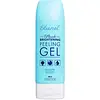What's inside
What's inside
 Key Ingredients
Key Ingredients

 Benefits
Benefits

 Concerns
Concerns

 Ingredients Side-by-side
Ingredients Side-by-side

Water
Skin ConditioningCellulose
AbsorbentDipropylene Glycol
HumectantTrehalose
HumectantButylene Glycol
HumectantFomes Officinalis Extract
Skin ProtectingAlthaea Rosea Flower Extract
Skin ConditioningLeontopodium Alpinum Extract
Skin ConditioningSolanum Lycopersicum Fruit/Leaf/Stem Extract
AstringentAcetyl Hexapeptide-8
HumectantDecapeptide-12
BleachingAloe Barbadensis Leaf Extract
EmollientDiospyros Kaki Leaf Extract
Skin ProtectingRhus Semialata Gall Extract
Skin ConditioningBetula Platyphylla Japonica Bark Extract
Skin ConditioningHoney Extract
HumectantGlycyrrhiza Glabra Root Extract
BleachingSalix Nigra Bark Extract
Skin ProtectingTocopheryl Acetate
AntioxidantAscorbyl Glucoside
AntioxidantCaprylhydroxamic Acid
Caprylyl Glycol
Emollient1,2-Hexanediol
Skin ConditioningPEG-60 Hydrogenated Castor Oil
EmulsifyingAllantoin
Skin ConditioningAcrylates/C10-30 Alkyl Acrylate Crosspolymer
Emulsion StabilisingPotassium Hydroxide
BufferingDisodium EDTA
Parfum
MaskingChlorphenesin
AntimicrobialWater, Cellulose, Dipropylene Glycol, Trehalose, Butylene Glycol, Fomes Officinalis Extract, Althaea Rosea Flower Extract, Leontopodium Alpinum Extract, Solanum Lycopersicum Fruit/Leaf/Stem Extract, Acetyl Hexapeptide-8, Decapeptide-12, Aloe Barbadensis Leaf Extract, Diospyros Kaki Leaf Extract, Rhus Semialata Gall Extract, Betula Platyphylla Japonica Bark Extract, Honey Extract, Glycyrrhiza Glabra Root Extract, Salix Nigra Bark Extract, Tocopheryl Acetate, Ascorbyl Glucoside, Caprylhydroxamic Acid, Caprylyl Glycol, 1,2-Hexanediol, PEG-60 Hydrogenated Castor Oil, Allantoin, Acrylates/C10-30 Alkyl Acrylate Crosspolymer, Potassium Hydroxide, Disodium EDTA, Parfum, Chlorphenesin
Water
Skin ConditioningAlcohol Denat.
AntimicrobialPropylene Glycol
HumectantGlycerin
HumectantCarbomer
Emulsion StabilisingPPG-26-Buteth-26
Skin ConditioningPalmitamidopropyltrimonium Chloride
PEG-40 Hydrogenated Castor Oil
EmulsifyingQuaternium-80
Parfum
MaskingBehentrimonium Chloride
PreservativeLinalool
PerfumingCitronellol
PerfumingCetrimonium Chloride
AntimicrobialIsopropyl Alcohol
SolventCrithmum Maritimum Extract
Skin ConditioningEryngium Maritimum Extract
TonicLeontopodium Alpinum Callus Culture Extract
AntioxidantSodium Hyaluronate
HumectantCitric Acid
BufferingXanthan Gum
EmulsifyingWater, Alcohol Denat., Propylene Glycol, Glycerin, Carbomer, PPG-26-Buteth-26, Palmitamidopropyltrimonium Chloride, PEG-40 Hydrogenated Castor Oil, Quaternium-80, Parfum, Behentrimonium Chloride, Linalool, Citronellol, Cetrimonium Chloride, Isopropyl Alcohol, Crithmum Maritimum Extract, Eryngium Maritimum Extract, Leontopodium Alpinum Callus Culture Extract, Sodium Hyaluronate, Citric Acid, Xanthan Gum
Ingredients Explained
These ingredients are found in both products.
Ingredients higher up in an ingredient list are typically present in a larger amount.
Parfum is a catch-all term for an ingredient or more that is used to give a scent to products.
Also called "fragrance", this ingredient can be a blend of hundreds of chemicals or plant oils. This means every product with "fragrance" or "parfum" in the ingredients list is a different mixture.
For instance, Habanolide is a proprietary trade name for a specific aroma chemical. When used as a fragrance ingredient in cosmetics, most aroma chemicals fall under the broad labeling category of “FRAGRANCE” or “PARFUM” according to EU and US regulations.
The term 'parfum' or 'fragrance' is not regulated in many countries. In many cases, it is up to the brand to define this term.
For instance, many brands choose to label themselves as "fragrance-free" because they are not using synthetic fragrances. However, their products may still contain ingredients such as essential oils that are considered a fragrance by INCI standards.
One example is Calendula flower extract. Calendula is an essential oil that still imparts a scent or 'fragrance'.
Depending on the blend, the ingredients in the mixture can cause allergies and sensitivities on the skin. Some ingredients that are known EU allergens include linalool and citronellol.
Parfum can also be used to mask or cover an unpleasant scent.
The bottom line is: not all fragrances/parfum/ingredients are created equally. If you are worried about fragrances, we recommend taking a closer look at an ingredient. And of course, we always recommend speaking with a professional.
Learn more about ParfumWater. It's the most common cosmetic ingredient of all. You'll usually see it at the top of ingredient lists, meaning that it makes up the largest part of the product.
So why is it so popular? Water most often acts as a solvent - this means that it helps dissolve other ingredients into the formulation.
You'll also recognize water as that liquid we all need to stay alive. If you see this, drink a glass of water. Stay hydrated!
Learn more about Water